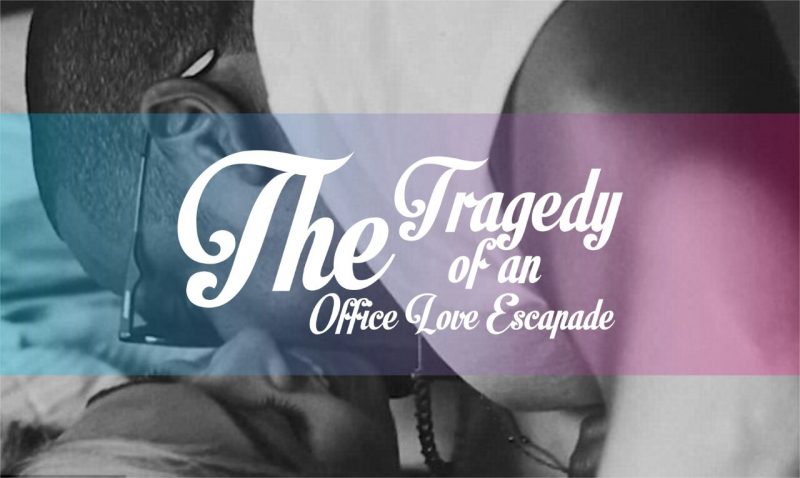When you look at the relationship between sadness and depression, they kind of seem similar. Right?
Many at times when we come across depression and sadness in a book or anywhere else, what comes to mind is the fact that they are both a temporary state of mind where the host does not feel that good and the need to communicate to the outside world is eliminated and all they want to do is to be left alone so they can hug their pillows and bury their heads into it to either cry their eyes out or reflect on the reason behind their current state of mind.
Well to some extent, the school of thought above is right but, there is more to it than meet the eyes, I will in the course of this article take you through the relationship between sadness and depression in the most comprehensive way ever.
Let’s kick start by taking an in-depth look at what sadness is, according to Wikipedia, sadness is simply an emotional pain that is associated with and triggered by feelings of being at a disadvantage, loss in it’s many forms, being in an hopelessness situation, emotional and physical pain, inability to be effective, dashed hopes and sadness itself.
An individual who experiences sadness can calm down or become lethargic and withdraw from others. An example of severe sadness is depression. Crying can be an indication of sadness.
It doesn’t end there, sadness can creep up on just anyone but, it is mostly attributed as a common experience in childhood i.e. while growing up and that is why certain families have a rule about their children not being allowed to have a moment of sadness even for a minute, in as much as this is in a positive light, the effect can be deadly as according to Robin Skynner;
Once children gets accustomed to the idea of not being allowed to get sad, they grow up to be irresponsible adults who turn out to be superficial and maniacs.
Pediatrician T.Berry Brazelton insists that analyzing the cause of sadness can help families to better manage earnest emotional issues.
Sadness is part of the normal process of the child that separates from an early symbiosis with the mother and becomes more independent. Each time a child separates a little more, he will face a small loss.
If the mother can not tolerate minor distress, the child may never learn to deal with the sadness itself. Brazelton maintains never allowing a child to have down moments and too much of encouragement devalues the emotion of sadness for them; and Selma Fraiberg suggests that it is important to respect the child’s right to live a full and profound loss.
Margaret Mahler also saw the ability to feel sadness as an emotional achievement, instead of, for example, avoiding it with restless hyperactivity. D. Winnicott also saw in sad tears the psychological root of precious musical experiences in later life.
While depression on the other hand is described according to Wikipedia as a state of moodiness or being moody and loss of interest in activities that can affect a person’s thoughts, behavior, feelings and sense of well-being.
A depressed mood is a normal and temporary reaction to life events, such as the loss of a loved one. It is also a symptom of some physical illnesses and a side effect of some medications and medical treatments. Depressed mood is also a symptom of certain mood disorders, such as major depressive disorder or dysthymia.
Furthermore, people who live with depression are particularly and visibly sad, anxious or empty as they mostly wear a frown and isolate themselves from casual conversations and small talks; they may also feel hopeless, helpless, discouraged or worthless.
Other symptoms may include feelings of guilt, irritability or anger. Other feelings expressed by these people may include feelings of shame or agitation expressed. These people may lose interest in activities they once considered pleasurable to family and friends, or experience loss of appetite or overeating.
Having concentration problems, remembering facts or general details, making decisions or experiencing difficulties in the relationship can also be important factors in the depression of these people and can also lead to their suicide attempt or death. Depression is considered as one of the main causes or risk factors for adolescent suicide, and more than half of the suicides in this age group are diagnosed with depressive orders before death.
Relationship between sadness and depression
Adolescent depression is also a major cause of educational and social disabilities, substance abuse, obesity and increased risk of smoking. Continuous loss of sleep, excessive sleep, exhaustion and headaches in general, pain and digestive problems and energy reduction may also be present in people with depression. Just as sadness is a disorder that stems from childhood, so is depression as adversity in childhood, such as grief over a loss, parental recklessness, mental abuse, physical abuse, sexual abuse and favoritism by parents can contribute to a great extent to depression in adulthood. In children, physical and sexual abuse in particular contributes significantly to the likelihood of experiencing depression during the course of life.
Few of the numerous life changes that can effect a depressed mood includes (among others): childbirth experience, old age, financial instability, unemployment, too much work load, a medical diagnosis (terminal, sexual related diseases etc.), bullying, financial loss, environmental changes, social isolation, forced intercourse, relationship issues, jealousy, divorce and life threatening injuries.
Kids at the verge of being an adult are most likely prone to experiencing a depressed mood after rejection by friends, peer pressure and bullying. In addition, cultural shock and nostalgia are one of the main factors that influence students. To be more precise, students who experience nostalgia may feel an alienation from their environment, anxiety and depression, especially when faced with problems. This can be combined with low self-esteem, which can make them less confident in public and social situations.
Difference(s) Between Sadness And Depression
Sadness is a normal human emotion we have all experienced and we will all do it again. Sadness is usually triggered by an event, an experience or a difficult, painful or disappointing situation. In other words, we tend to be sad about something. It also means that when something changes, when our emotional pain vanishes, when we have adjusted or we have overcome loss or disappointment, our sadness leaves us.
Depression is most definitely out-of-the-normal state of mind, it can be likened to a severe mental illness that affects our thoughts, emotions, perceptions and behaviors in an omnipresent and chronic way. When we feel extreme sadness, nothing cheers us up and we are practically sad about everything. Depression is not necessarily by an unfavorable event or a complex situation, a loss or a change of circumstance. In fact, it can thrive in the absence of such triggers. The lives of people on paper could be very good, they would even admit that it is true, and yet they feel horrible.
Depression paints all aspects of our lives, making everything less pleasant, less interesting, less important, less kind and less valuable. Depression clouds and somewhat minimize our energy, pinning down motivation and ability to experience joy, pleasure, emotion, anticipation, satisfaction, connection and meaning. All your thresholds tend to be lower. You are more impatient, faster with anger and frustrated, faster when the world seems to be crashing on you and it takes more time to recover from everything.
Are People Who are Depressed Always Sad?
Depression is way beyond ordinarily nursing the feeling of sadness. In the real sense of it, some depressed persons are usually the funniest and the most hilarious set of individuals you will ever meet thereby proving the point that sadness does not always indicate depression. Relapsing into a sad state over and over again is usually of depression, but some people feel enough other signs and symptoms to be considered depressed. There are several explanations of why a person can be depressed without feeling sad.
A depressed person may not feel blue recognizable because he has become emotionally numb. They do not feel deeply sad, but they do not feel happy either. They feel only a vague darkness. The person can go about their daily activities while being emotionally numb, participating in activities half-minded and being deprived of the emotional reward that comes with getting involved in those activities.
If a person is committed to depression, they may not feel sad. They indulge themselves in excessive use of drugs leading to abuse or making alcohol their best companion just to create false emotions of happiness or pleasure. But self-medication is not the only way a depressed person can hide his sadness. Sometimes people throw themselves into their work; at other times, they participate in sexual exploitation to stimulate their state of mind. The person may not be aware that this is what he is doing. In other words, they pursue the pleasure of avoiding facing their feelings.
Sometimes, depression degenerates into endless anger, physical pain or total breakdown in form of illness. Instead of feeling sad, a person may experience migraines, muscle aches, stomach problems and more. A significant loss in the course of life brings about sadness in almost every human; however, this type of sadness is usually short lived as the affected person(s) usually finds some relief through tears or talks about their loss.
On the other hand, a depressed person feels sad without improving and there is no amount of conversation or crying that seems to alleviate the problem. A sad person quite capable of experiencing some other emotions, but depression tends to blur the person’s emotional range.
Another noticeable difference between these two has to do with perspective. Sadness rarely makes it difficult for a person to hold on to the appropriate perspective while depression on the other hand leads to contorted perspective.
What Causes Sadness and Depression?
As we have highlighted above, depression has been known to be an extremely complex disease. No one can categorically pinpoint the causes but it can occur for a wide variety of reasons. Some people experience depression during a serious medical illness. Others recline into depression with tragic life changes such as a move over security reasons that will see them start their lives all over or coping with the death of a loved one. Still others have a family history of depression i.e. a genetically inherited state of mind.
Those who do may experience depression and feel overwhelmed with sadness and loneliness for no known reason. Some of the main causes of depression includes but not limited to;
• Abuse
Past physical and present sexual and emotional abuse that is being bottled up because of the stigma that is associated to talking about it to anyone can increase an individual’s vulnerability to depression later in life.
• Conflict
Disagreements, misunderstandings, brawl and other ill relationships with family members may drive affected persons into depression.
• Death or a loss
We all feel bad when we lose out on something that could have changed our lives for the better but we feel even a greater sadness when we lose a loved one we have a cordial relationship with, coping with these emotions alone by wanting to be strong all by yourself can increase the risk of depression.
• Major events
Coping with the reality of life in general can lead to depression, no matter the reward of the just achieved milestone i.e. positive changes as well as negative ones can degenerate into depression.
• Other personal problems
Problems such as piling debts, relationship issues, sexual inefficiency and loneliness can contribute to the risk of developing clinical depression.
• Serious illnesses
In some occasions, depression comes into play when an individual has been battling with a medical condition for long.
• Substance abuse
More than 20% of persons entangled in the web of substance abuse suffer from depression.





2 Comments
Difference Between Feeling Low And Clinical Depression | DeeDee's Blog
March 14, 2018 at 3:18 am[…] Relationship Between Sadness And Depression […]
Depression or Low Self Esteem? - Read This Devastating Story of a 23 Year Old | DeeDee's Blog
March 22, 2018 at 6:10 am[…] Relationship Between Sadness And Depression […]